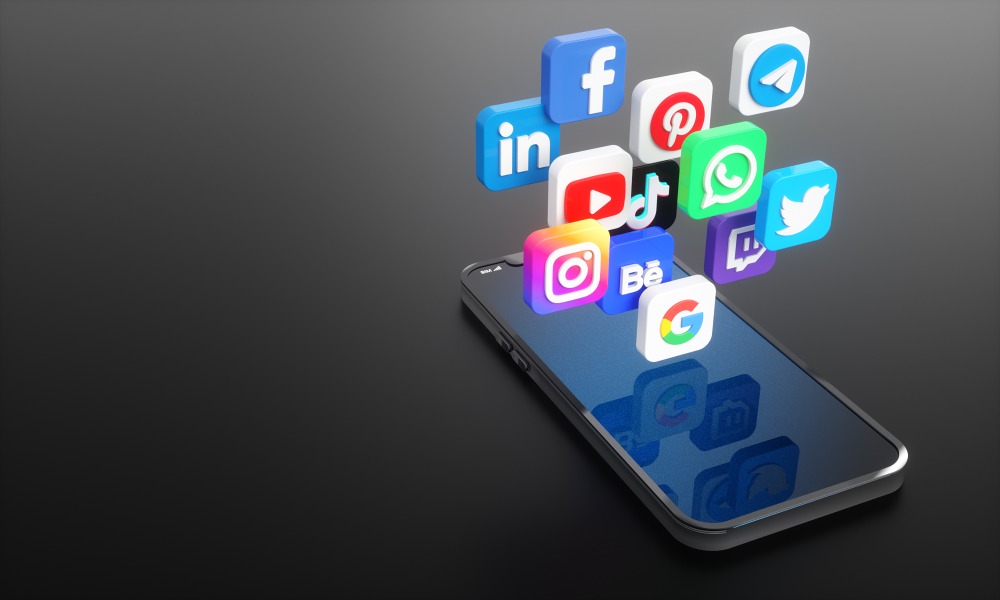Social media has a direct impact on business development. And companies that actively work with this channel get more loyalty from the audience and search engines. First, each comment, like, or repost shows that your content is relevant to your customers. Secondly, it indicates that it has already spread to your clients’ contacts in the network.
Thus, due to clicks and indexing content by search engines, companies that are active with social media platforms, both in terms of advertising and customer interactions, sell a quarter more than those who don’t work with this channel. So what are the peculiarities of working with social media in customer service? How to set up the proper interactions with users in a network? You can find the answers to these and many other questions in this blog post.
How to Benefit From Social Media: Rules of the Game
According to research conducted by Teleperformance, some brands still don’t provide the necessary consistency regarding customer service on social media. For example, according to a Teleperformance Customer Experience Lab study (CX Lab), of the 40% of customers who said they were satisfied with their communications with the company, 34% posted harmful content. And here, a pretty logical question arises: how did it happen?
The key to successfully solving this problem is to teach community managers how to properly work with customers, solve problematic appeals and manage complaints. In addition, you should make these specialists feel they are an integral part of the company and customer engagement strategy. So social networks are a challenging channel of communication to manage, requiring adherence to specific rules, among which some things you should do and others — strictly avoid.
Must Do
So, we’ve discovered that social media customer service is essential for all modern companies. And now, you’re going to learn the latest tips on what you should do while communicating with customers to get them to be as loyal to your brand as possible. And if you want social media to be a tool for effective customer service, start applying these recommendations right now:
✔️ Respond to all customer appeals. It affects the formation of a positive attitude to the brand. So, for example, among customers who had low expectations in terms of response in the social network, 34%, when successfully resolving the issue, recommend the company to their friends and acquaintances.
✔️ Work with negative comments. Organizations should respond to social media complaints. For example, 23% of those initially brand-loyal customers stopped buying products or using a given company’s services because they didn’t get an answer to their question in time. That is, such a company loses nearly one in four customers. Moreover, there is a risk that another 29% of dissatisfied consumers will share negative experiences in their feed, remembering to mention the brand.
✔️ Adhere to a certain speed of response to an appeal. The recommended one is a response within 15-30 minutes. Of course, depending on the resources and the chosen communication strategy, each company sets its optimal timeline. But it’s important to remember that the speed of response directly affects customer satisfaction.
✔️ Develop an individual communication style. It’s essential to develop and constantly use your unique communication style and tone of voice, allowing the brand to stand out among the others and simultaneously interact with the audience in the most interactive way. It will enable them to feel part of the brand and show that the latter is already part of their lives.
Do you need help using social media as a customer service tool?
Contact Growth Hackers
✔️ Measure customer satisfaction. Remember that social media is a channel that you can use for sales and service. Thus, conduct regular satisfaction surveys to get feedback from visitors and have a complete picture of how good your customer service is. You can do it on any social networking site where you also use cross-posting.
✔️ Collaborate with opinion leaders and brand advocates, i.e., those users who influence the formation of public opinion in social media space. It requires a clear strategy that considers working with customer engagement.
Mustn’t Do
Of course, social media is a powerful tool for customer service. And if you want to keep it that way, you must remember three basic rules about what not to do when communicating with clients. Otherwise, it can have negative consequences for you and your brand.
❌ Curse the customers. It seems like an obvious fact, but sometimes it’s not so easy. First, it’s very unpleasant when users on social media allow themselves to insult your company. And the natural reaction of the person in charge of customer interaction would be to respond to the user negatively, or worse, to insult them.
However, such a small splash of emotions can ruin a company’s image. So when you face an angry or disgruntled client, the easiest and most polite way is to turn everything into a private conversation and then clarify the situation and find out how you can solve it.
Consider also that sometimes brands use such clients to their advantage. For example, suppose a customer support specialist can quickly solve a problem by offering the contacted user a great solution. In that case, negative public messages, on the contrary, will contribute to building a positive image of the company among those users who followed the comments to the post.
❌ Bring up politics, religion, or any other sensitive topic. Exceptions to this rule are only pages of political/religious figures, parties, or organizations. So avoid showing your audience your familiarity with political issues or other topics that can cause a heated discussion, even if they are trending.
The company needs to take a neutral stance. Otherwise, it risks making enemies. The easiest way to avoid it is to create a social media interaction regulation stating that posts with certain content will be deleted by the administrator or moderator of the page to prevent open discussions related to divergent views of other users.
❌ Underestimate the importance of spelling rules. For example, you have a favorite brand you’re subscribed to on Instagram, with posts you regularly read and publish. But let’s imagine for a moment that the community manager who manages the brand’s page accidentally or not made a mistake in the text and wrote, for example, “booking accommodation in Greece.”
Even if it’s an obvious typo, a hundred points will annoy some of your audience. What will you feel in this case: indifference or still some embarrassment? At a minimum, most people in similar situations will seem like their favorite brand is imperfect. It leaves a negative imprint, sometimes leading to a loss of loyalty.
Elevate customer satisfaction by using social media as a tool for customer service!
Myths About Social Networks
Even though today, social media is one of the most popular ways to communicate with customers, especially among Generation Y, you’ve probably heard about popular misconceptions about using this channel. So let’s look at the most common myths and find out how true they are.
# 1 Myth: Social Media Can Replace Existing Communication Channels
Here we mean mostly a chat and calls. Since many companies now provide an average of 4-6 channels for consumer interaction, social media is only one way to contact a brand or customer support service. And despite such an obvious benefit as the ability to quickly communicate with brand representatives here and now, many customers still prefer other ways of communication or combine several at once (Emails, phone calls, etc.).
Nevertheless, social networks are a great additional channel that allows solving the following issues:
- Access to a new audience: users who haven’t previously contacted customer service through any other channel can begin to contact you.
- Increased customer satisfaction and a positive impact on brand image: customer service managers work to resolve issues that may have previously gone unanswered.
- A new and convenient way to communicate with existing customers: 43% of consumers who use voice channels also use other ways to communicate with the brand.
- Shifting the workload from the voice channel to the digital ones.
- An additional sales channel.
# 2 Myth: Work with Social Networks Can’t Be Outsourced
It’s thought that no one will cope with social networks better than a company’s internal digital or PR departments. Well, that opinion only partly makes sense. Working with social media is very complicated. That’s why the support of this channel is usually handled by those departments responsible for developing a marketing strategy.
But there’s one “but” here. Digital and PR departments are primarily responsible for brand promotion strategy, content, and advertising in social media. Yet, at the same time, such an essential aspect as client interaction is left out of their attention. And perhaps, in this case, it’s better to outsource social media work with customers to an outside contractor.
# 3 Myth: Customer Service Specialists Can’t Work with Social Media
The opinion that a customer service specialist is only a talking head who only says what’s written is a fallacy. Not everyone knows how to work with social media, and those who know how to work with it comprehensively are even fewer. Thus, the specialist’s profile should always be calibrated to your task. Remember that quality service is ensured through a well-established process of recruiting and training customer support specialists focused explicitly on working in social networks. That’s why working with an experienced social media connector can bring your customer service from average to fantastic.
Bottom Line on Using Social Media as a Customer Service Tool
Social media is an effective tool for manual or automated customer support if you know how to use it and avoid making gross mistakes when communicating with customers. And it’s also necessary to remember that to organize high-quality work with social media, you must keep an optimal balance and interaction between customer support and marketing departments.
Growth Hackers is a full-service social media marketing agency helping businesses from all over the world grow. There is no fluff with Growth Hackers. We help entrepreneurs and business owners use social media as a customer service tool, generate qualified leads, optimize their conversion rate, gather and analyze data analytics, acquire and retain users and increase sales. We go further than brand awareness and exposure. We make sure that the strategies we implement move the needle so your business grow, strive and succeed. If you too want your business to reach new heights, contact Growth Hackers today so we can discuss about your brand and create a custom growth plan for you. You’re just one click away to skyrocket your business.








